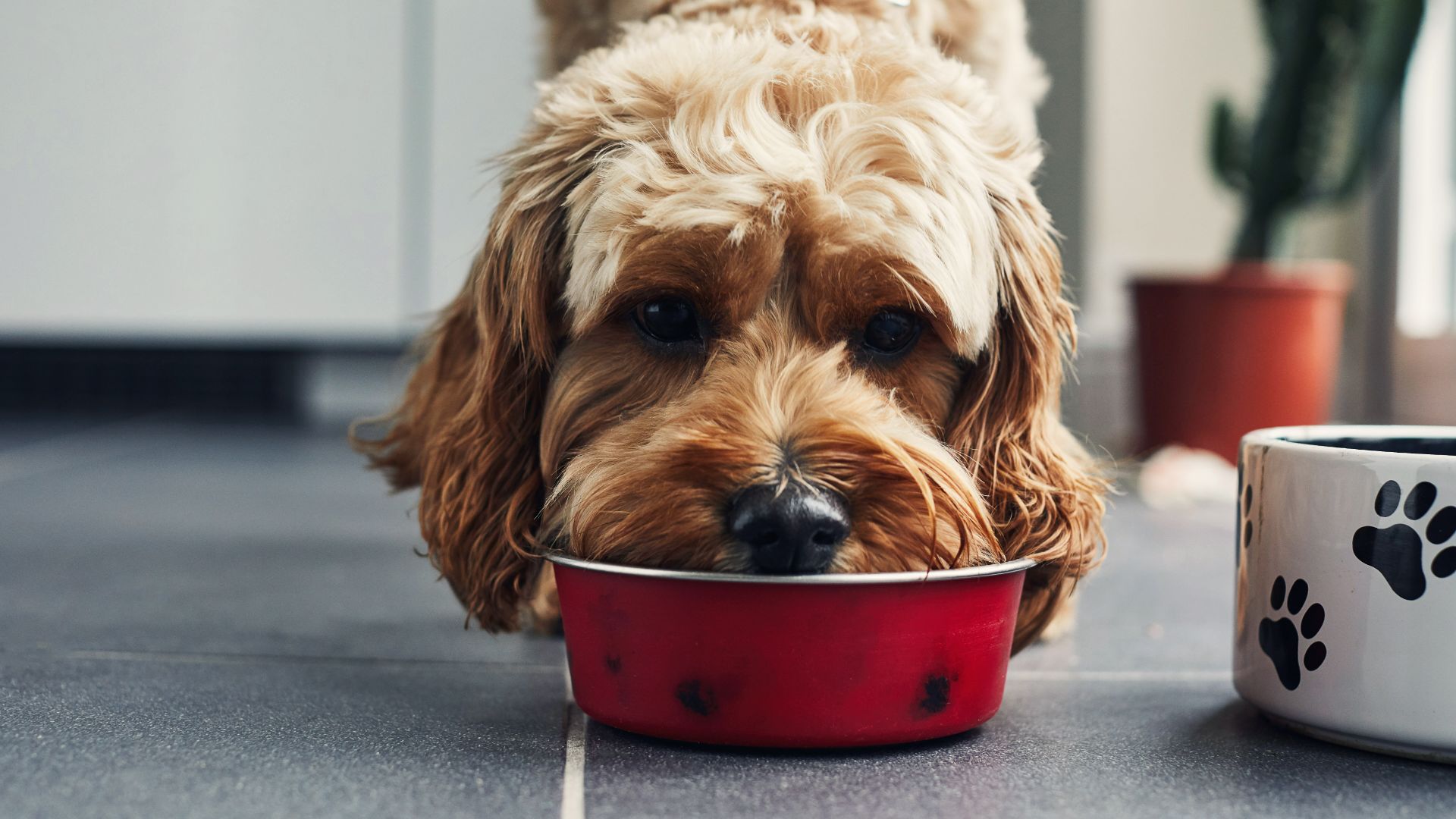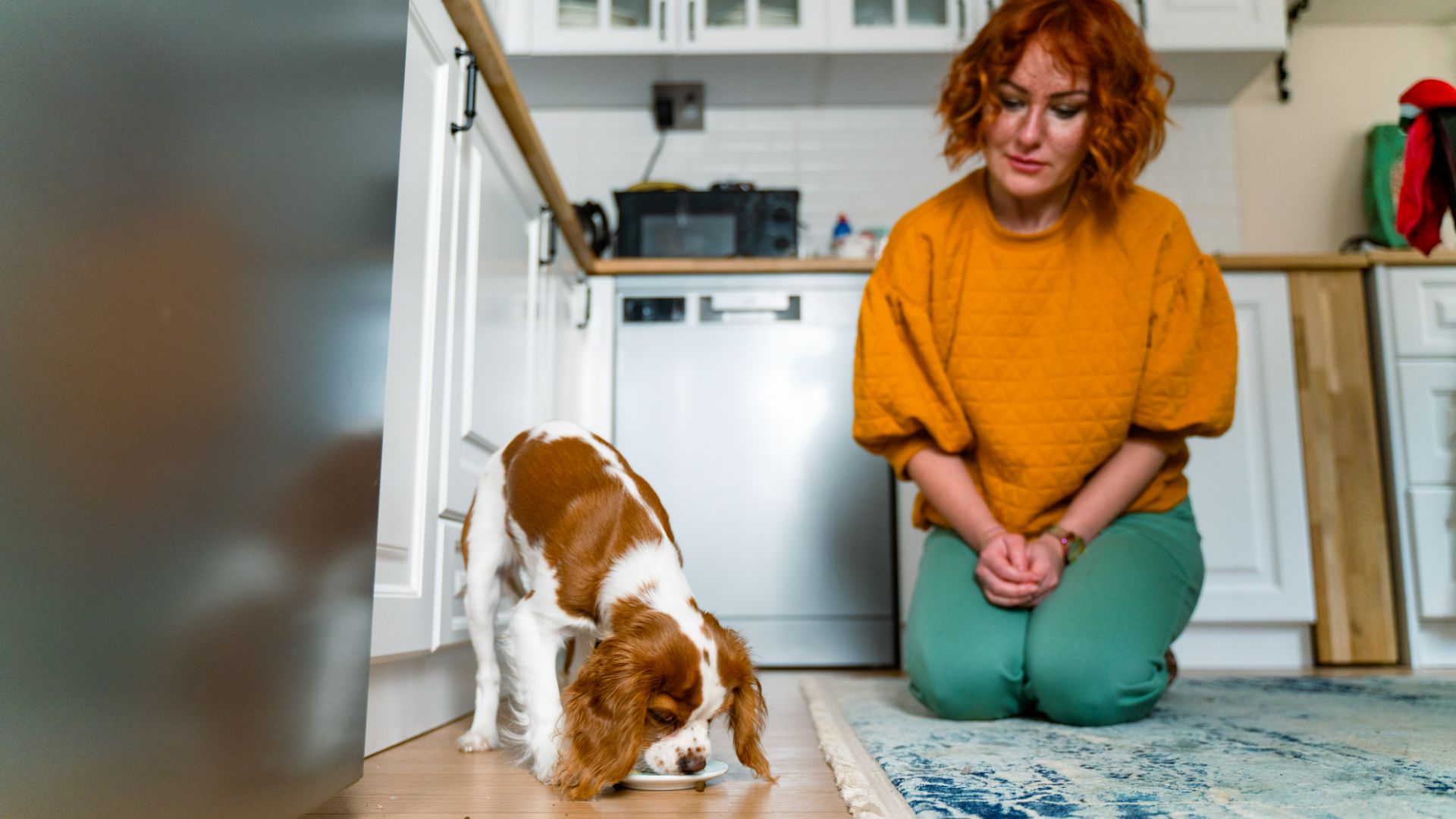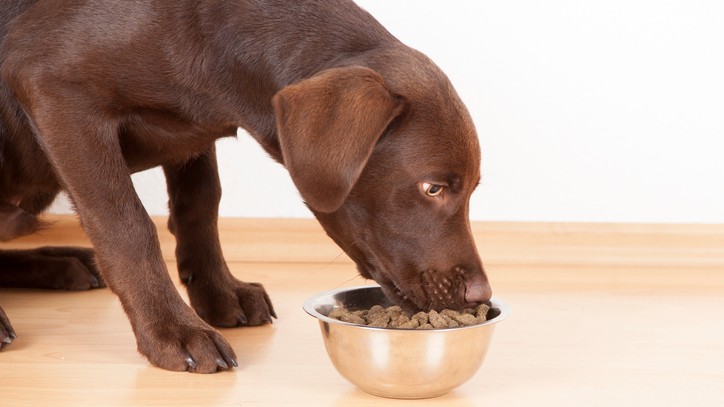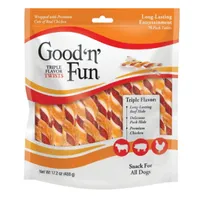Food aggression in dogs: Vet reveals common causes and tips to help
Food aggression in dogs can be a scary and overwhelming issue for pet parents. We spoke to a vet and got some tips to help you navigate this common problem.

Food aggression in dogs is a common problem that pet parents face. Your dog may display signs of aggression by snapping or growling at you or other family members when you come near their food bowl, and it can be difficult to know what to do and how to manage this behavior.
It makes sense that your pup may not want to share their food, especially if they have a bowl full of the best dog food, but it can be nerve-wracking to have our pups growling at us.
If this is you, don’t worry because with the right support and information food aggression can be managed. Vet, Dr. Elizabeth Racine lays out everything we need to know about food aggression in dogs. From common causes to ways to manage it, let’s take a look.
What causes food aggression in dogs?

There are many reasons dogs develop food aggression. In dogs, food aggression is often oversimplified as a sign of dominance. While this does happen, it is not always the reason for the behavior.
Aggressive behavior can also be the result of fear and anxiety. When dogs have to compete for resources, they can become more protective over the resources they have, which is known as resource guarding in dogs. Dogs may demonstrate this behavior with high-value objects, such as food or toys.
Many animals that come from shelters have issues with food aggression. Some of these dogs have come from traumatic backgrounds where resources were scarce. Even when they’re no longer in that situation, they may still have a greater tendency for resource guarding. However, not all dogs who develop food aggression come from this type of background. Just like humans, some dogs are just more possessive and motivated by food than others.
How to recognize food aggression

Recognizing the warning signs of food aggression is all about knowing how to read a dog’s body language. Pay close attention to how your dog reacts to you if you approach them during a meal. One of the first signs to look for is your dog appearing stiff or tense. Dogs exhibiting this behavior may be assessing whether or not you are a threat to their food. As your dog becomes more defensive, they may crouch or hunch over their food bowl in an attempt to guard it.
Get the best advice, tips and top tech for your beloved Pets
When early warning signs of aggression are missed or ignored, the behavior can escalate. Many dogs will curl their lip or growl in an attempt to ward off anyone they may perceive as a threat. Severe cases of food aggression can result in lunging and biting. Warning signs may be subtle. In some cases, there may be little to no warning at all. It is critical to pay close attention to your dog’s body language and always be cautious when approaching a new dog.
How do you stop food aggression in dogs?

1. Avoid feeding in high-traffic areas
Dogs are more likely to perceive a threat to their food in an area where there are multiple animals or people. Feed your dog in a quiet area of the house where they will not be disturbed. This can prevent your dog from feeling as though they need to protect their food.
2. Be cautious with your training methods
When adjusting to a new dog, it is common for pet owners to try different training methods to prevent food aggression. Unfortunately, some of these techniques may exacerbate the problem. Some owners will stand over their dog or pick up the food bowl during a meal. The thought is that this will desensitize the dog to their presence and establish dominance. However, this can have the opposite effect. If your dog fears that you may take their food away, they may become even more possessive. Food is necessary for their survival, and it is natural for them to want to protect this resource.
If you want some more tips for training your dog, check out our list of top tips for training your dog on your own.
3. High-value trades
As previously mentioned, removing a dog’s food bowl is a common training technique used by pet owners to prevent food aggression. However, you probably wouldn’t be very happy if someone took your plate away and gave you nothing in return. So it’s not fair to expect that from our dogs. If you want to try this training method or need to take food away from your dog, try presenting them with a high-value trade. This could be a favorite treat or toy. When you offer your dog something in return, removing the food is no longer a negative experience
Good 'n' Fun Triple Flavor Chews Beef, Pork & Chicken Twists Dog Chews
Made with popular favorites, rawhide, pork, and then wrapped in chicken your dog is sure to love these long-lasting chews. They are high in protein and even help promote clean teeth.
4. Avoid punishment
Bad behavior can be very frustrating, and reprimanding your dog may be your first instinct. With food-aggressive dogs, it’s essential to avoid lashing out or punishing them for the behavior. This confrontation can cause them to become more aggressive, and the heightened fear and anxiety may escalate their reaction. Food aggression can also progress into other forms of resource guarding. While dogs should not be rewarded for their bad behavior, ignoring or avoiding the behavior is often a safer approach.
When to seek help with food aggression
When your dog becomes food-aggressive, it can be dangerous to you and other pets in your home. If your dog is lunging at you or others, you should seek professional help. Even if your dog is exhibiting only mild signs of aggression, a professional can help you integrate appropriate training methods to prevent the behavior from becoming worse.
Consulting with your vet is a great place to start. They can help you identify the root of the problem and discuss safe ways to address your unique concerns. Some vets who undergo specialty training are board-certified in animal behavior. A consult with a veterinary behaviorist can be extremely helpful in more severe cases of food aggression.
Tackle food aggression problems early
Food aggression is a common problem dog owners face. While resource guarding is a natural behavior, food aggression should be taken seriously. Many things contribute to food-aggressive behavior, but luckily, you can do some things to help. Recognizing the problem early and avoiding possible triggers is key. Food aggression can be a dangerous behavior, and it is critical to seek professional help sooner than later.
If you found this article helpful and want to learn more, check out how to handle dog aggression and 12 signs of aggression in dogs.
Dr. Elizabeth Racine is a small animal general practice vet covering all things pet health and wellness. Her special interests include veterinary behavior, nutrition, and internal medicine.
As a freelance writer, Dr. Racine has written content for major companies in the industry such as the American Kennel Club, Merck Animal Health, Bayer PetBasics, Elanco, and CareCredit. In her free time, Dr. Racine enjoys playing trampoline dodgeball, hiking with her beagle Dasher, and spending time with her three mischievous cats.


